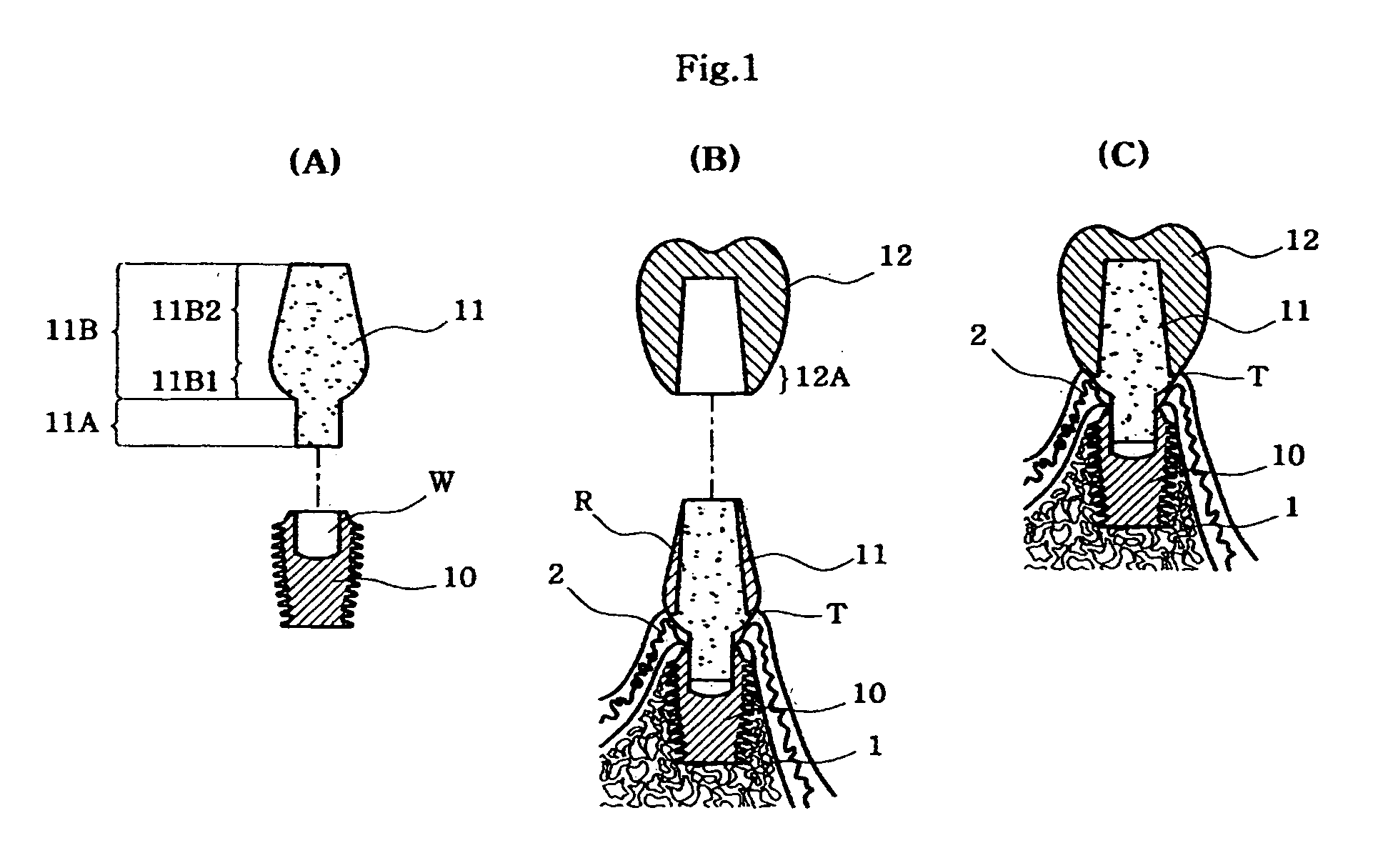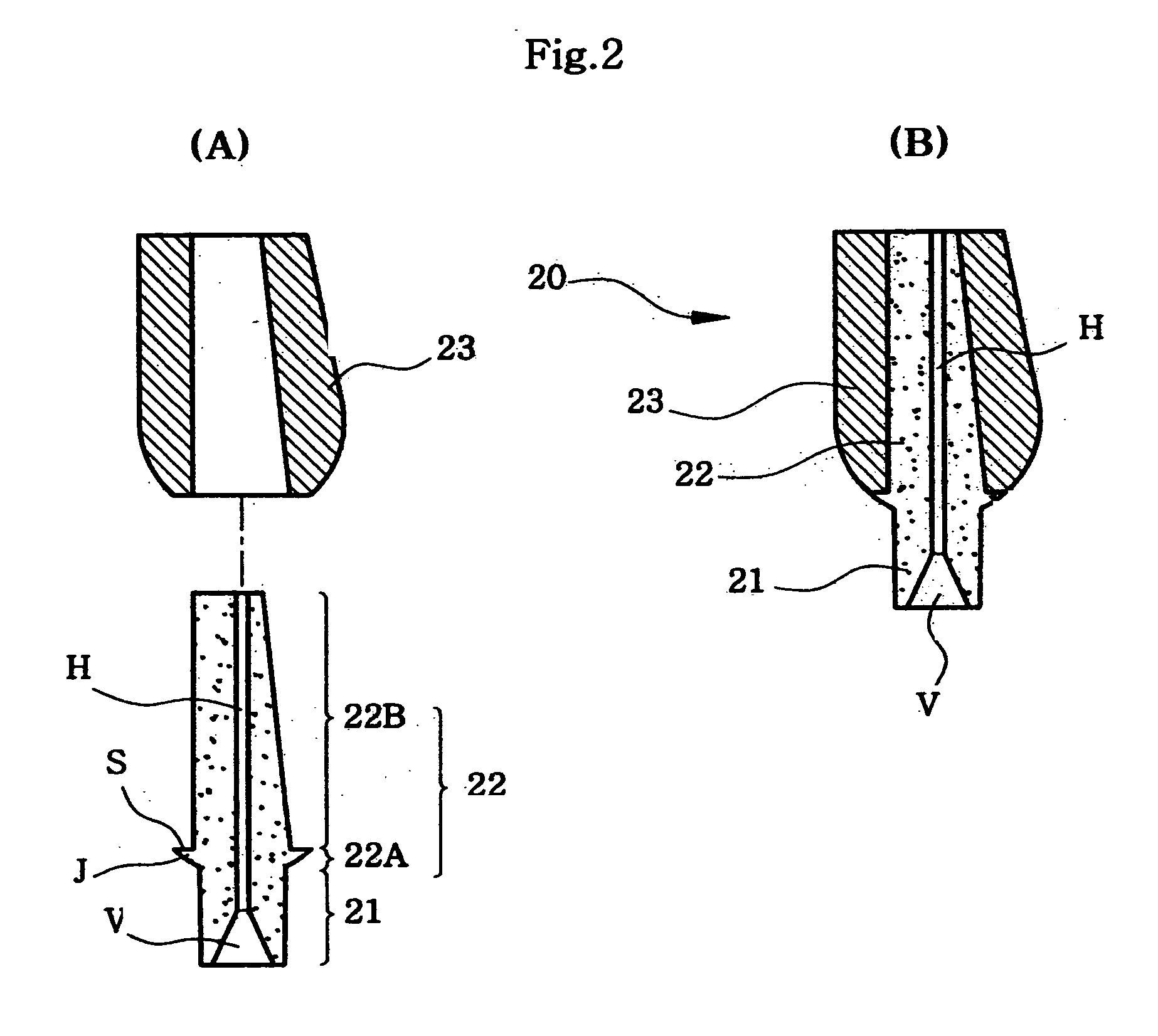Locking-taper abutment for dental implants
- Summary
- Abstract
- Description
- Claims
- Application Information
AI Technical Summary
Benefits of technology
Problems solved by technology
Method used
Image
Examples
Embodiment Construction
[0038] Hereinafter, embodiments of the present invention will be described in detail with reference to the attached drawings.
[0039] Reference now should be made to the drawings, in which the same reference numerals are used throughout the different drawings to designate the same or similar components.
[0040]FIGS. 2A and 2B are sectional views of a locking-taper abutment 20, according to an embodiment of the present invention, wherein: FIG. 2A is an exploded sectional view of the locking-taper abutment 20; and FIG. 2B is a sectional view of the locking-taper abutment 20.
[0041] As shown in FIGS. 2A and 2B, the locking-taper abutment 20 of the present invention includes a post part 21 which is inserted into a well (W) provided in a fixture 10 while enlarging in diameter from the bottom to the top. A conical elastic hole (V) is provided in a lower end of the post part 21.
[0042] The locking-taper abutment 20 further includes a body part 22. The body part 22 has a seating part 22A whic...
PUM
 Login to View More
Login to View More Abstract
Description
Claims
Application Information
 Login to View More
Login to View More - Generate Ideas
- Intellectual Property
- Life Sciences
- Materials
- Tech Scout
- Unparalleled Data Quality
- Higher Quality Content
- 60% Fewer Hallucinations
Browse by: Latest US Patents, China's latest patents, Technical Efficacy Thesaurus, Application Domain, Technology Topic, Popular Technical Reports.
© 2025 PatSnap. All rights reserved.Legal|Privacy policy|Modern Slavery Act Transparency Statement|Sitemap|About US| Contact US: help@patsnap.com



